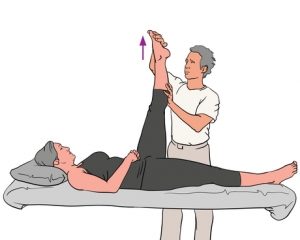Muscle Energy Technique (MET)

Muscle Energy Technique (MET): Procedure & It’s Analysis
Muscle Energy technique mostly describes a group of manual therapy techniques that focuses on improving joint and musculoskeletal function or joint function and on improving joint pain. This technique uses the patient’s normal muscle contractions to normalize the joint motion and lengthen and relax the muscles. This is an active technique in which the patient uses voluntary contractions of the muscles from a precisely controlled position in a specified direction, against a counterforce. MET is used to lengthen the spastic or shortened muscle and to strengthen weakened muscles, or to mobilize restricted joint motion and to reduce localized edema,
Muscle energy techniques may be implemented appropriately to nearly any joint inside the frame. Many athletes use MET as a preventative degree to protect in opposition to destiny muscle and joint harm. It is specifically utilized by people who have a restricted variety of movement because of aspect joint disorder in the neck and again, and for broader regions such as; shoulder pain, scoliosis, sciatica, unsymmetrical legs, hips or arms (for example when one is longer or better than the other), or to treat continual muscle ache, stiffness or harm.
Physiological basis of muscle energy technique:
It is based on the following factors:
- Law of reciprocal innervations: Contraction of an agonist muscle reflex inhibits its antagonist.
- Autogenic inhibition: contraction of a muscle from a lengthened position produces sufficient tension to achieve the Golgi tendon apparatus, this leads to inhibition of alpha and gamma motor neurons leading to lengthening of muscle upon relaxation.
Muscle Energy Technique (MET) is derived from the concept that if a joint isn’t used to its complete variety of movement, its function will lessen and it is going to be susceptible to struggling traces and accidents. This therapy uses a patient’s very own muscular energy (the pressure); while the therapist presents a stationary surface (resistance) the affected person will contract their muscle towards a good way to stretch the muscle and the joint to its full capability
There are varieties of MET:
Post-Isometric Relaxation (PIR) The therapist stretches and elongates a muscle as it relaxes properly after a customer contraction. This lengthens, relaxes and realigns the muscle fibers. This is beneficial for chronic situations to assist in resetting the muscle tone.
Reciprocal Inhibition (RI) is a law of frame dynamics that whilst you contract a muscle the opposing or reciprocal muscle has to relax. That is the way the mind is stressed out and the precept that makes this approach painting. The rubdown therapist has the patient’s muscle perform a contraction in opposition to resistance which relaxes the opposing muscle and minimizes the aggravation to the injured muscle and soft tissue.
Method of Treatment:
MET can be used with both acute and chronic conditions, but the intensity and duration of symptoms will determine which variation of MET is suitable.
The client holds the contraction for 10 to 12 seconds and then relaxes fully by taking a deep breath in and, as they breathe out, the therapist passively guides the joint that lengthens the hypertonic muscle into a newly obtained position, successfully normalizing joint ROM. The process should be repeated until no further progress is made (normally three to four times) and finally a stretch should be held for approx 20 to 30 seconds.
MET is quite a mild form of stretching when compared to other techniques, such as proprioceptive neuromuscular facilitation (PNF), and MET is, therefore, more appropriate for rehabilitation.
Check out these links fo relevant information: Sports
physiotherapy
For more details contact us on 📞9618906780
